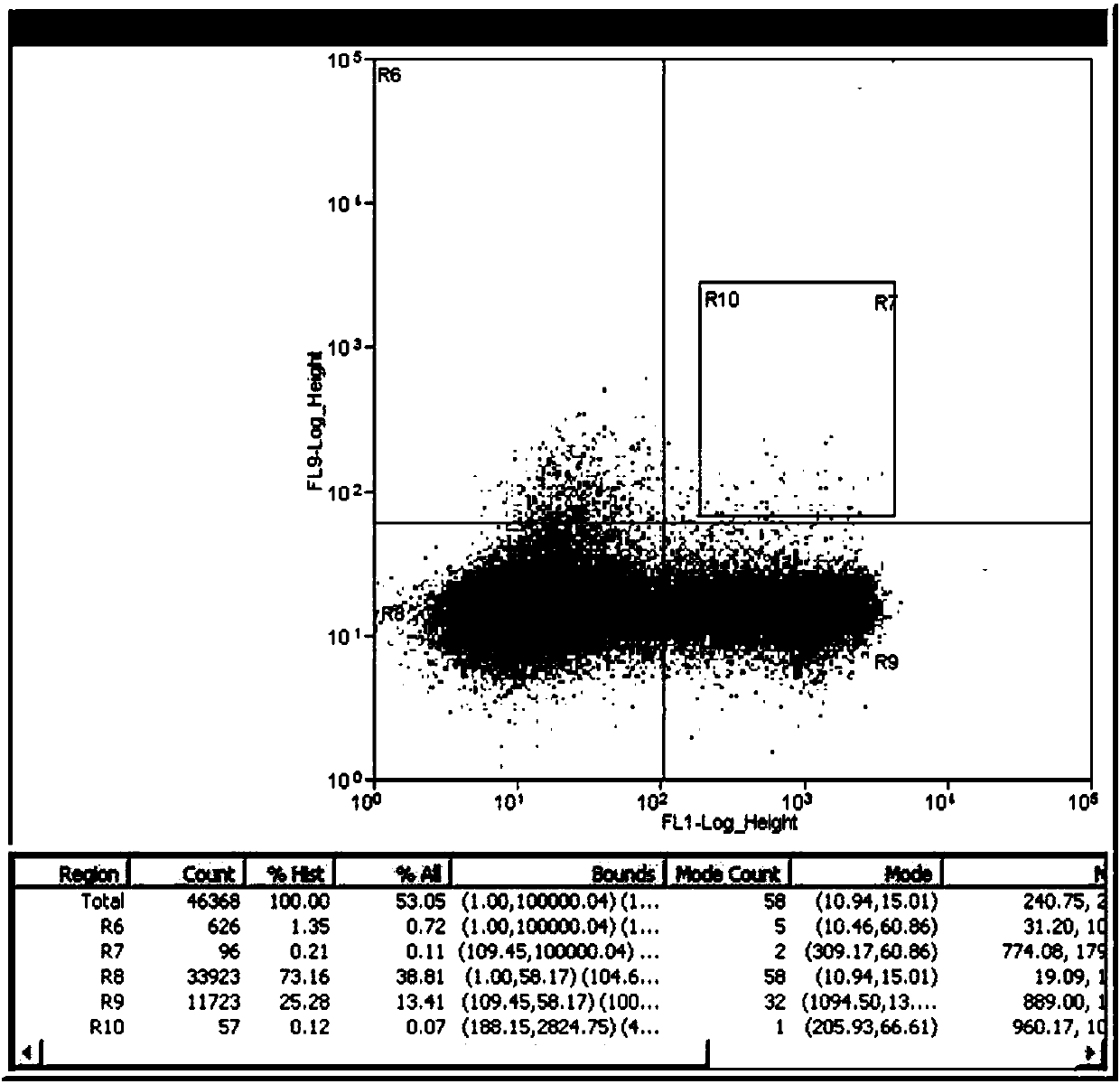TCR (T Cell Receptor) for identifying S183-91 epitope of hepatitis B virus (HBV) surface antigen and application of TCR
A technology of surface antigens and epitopes, applied in the direction of receptors/cell surface antigens/cell surface determinants, viruses, viral peptides, etc., can solve the problems of unrealistic bone marrow transplantation and failure to make people see hope, and achieve strong The effect of lethality
- Summary
- Abstract
- Description
- Claims
- Application Information
AI Technical Summary
Problems solved by technology
Method used
Image
Examples
Embodiment 1
[0104] Example 1 Cloning the TCR gene of HBVS183-91 epitope-specific T cells
[0105] Peripheral blood lymphocytes (PBL) were isolated from fresh blood obtained from recovered HBV-infected volunteers with HLA type HLA-A*0201.
[0106] Firstly, PBL was isolated by Ficoll-Hypaque (GE) density gradient centrifugation. Then the PBL was washed with DPBS (Life), resuspended in RPMI medium (Life) (2% human Serum), and a final concentration of 1uM of HBV S183-91 polypeptide (FLLTRILTI, SEQ ID NO: 31; Gensiray) was added. ) and 20 IU / ml interleukin 2 (IL-2; peprotech), cultured in 24-well plate for 10 days.
[0107] After 10 days, according to the instructions of the IFN-γSecretion Assay cell enrichment and detection kit (Miltenyi), after further stimulation with 10uM S183-91 polypeptide, CD8+ and IFN-γ double-positive cells were sorted by flow cytometry (Moflo XDP, Beckman Coulter). Single cells (for sorting results, see figure 1 ) into a 96-well PCR plate, centrifuged and placed a...
Embodiment 2
[0109] Example 2 Preparation of lentivirus containing TCR chain
[0110] After the above-mentioned TCR gene initially verified by IMGT was synthesized into a gene fragment (BGI&Genecreate), it was assembled into a complete TCR chain by the method of overlap PCR, wherein the constant region of TCR was replaced by the constant region of mouse origin (CJ , Y et al.2006), in order to avoid the mismatch between the imported TCR and the endogenous TCR gene and to facilitate subsequent testing of TCR gene expression. The PCR product was cut with NotI and NheI (FastDigest, Life) and then subcloned into the pHAGE vector.
[0111] After the correct sequence was verified by sequencing, 293T cells were co-transfected with psPAX2 and pMD2.G 3 plasmid packaging system. 24 hours after transfection, collect the first batch of lentiviral supernatant; 48 hours later, collect the second batch of lentiviral supernatant.
Embodiment 3
[0112] Example 3 Transfection of T cells and pentamer binding ability of T cells after transfection.
[0113] After stimulating the PBL obtained by Ficoll-Hypaque with OKT-3 (Biolegend) and IL-2 for 24 hours, add lentiviral supernatant and polybrene (sigma, final concentration 8ug / mL) at 1:1, centrifuge at 1000g for 60 minutes, put Return to 37°C incubator. After 4 hours, replace with fresh cRPMI medium. The components of cRPMI medium are 10% heat-inactivated FBS, 1X GlutaMax, 1Xsodium pyruvate, 1XHEPES (all from Gibco, Life), 50uM 2-ME (sigma), penicilin / streptomycin (Hangzhou Keyi).
[0114] After 24 hours, aspirate half of the medium, re-add an equal volume of lentiviral supernatant, supplement polybrene to a final concentration of 8ug / ml, and centrifuge at 1000g for 60 minutes. Change back to cRPMI medium after 4 hours. (same as the first transfection).
[0115] After 2-7 days of transfection, collect the cells, wash the cells with Wash buffer (0.5% BSA in PBS) accordi...
PUM
 Login to View More
Login to View More Abstract
Description
Claims
Application Information
 Login to View More
Login to View More - R&D
- Intellectual Property
- Life Sciences
- Materials
- Tech Scout
- Unparalleled Data Quality
- Higher Quality Content
- 60% Fewer Hallucinations
Browse by: Latest US Patents, China's latest patents, Technical Efficacy Thesaurus, Application Domain, Technology Topic, Popular Technical Reports.
© 2025 PatSnap. All rights reserved.Legal|Privacy policy|Modern Slavery Act Transparency Statement|Sitemap|About US| Contact US: help@patsnap.com



